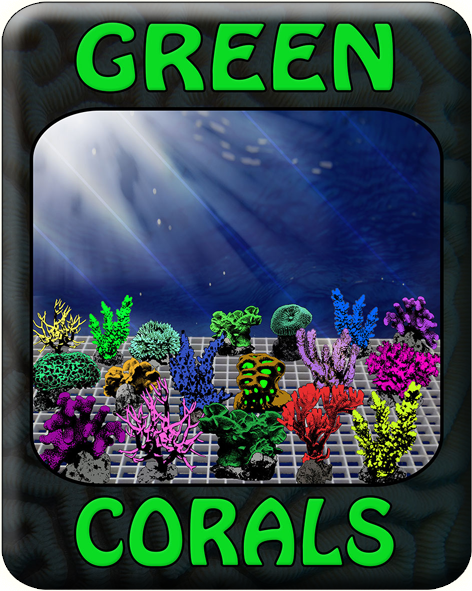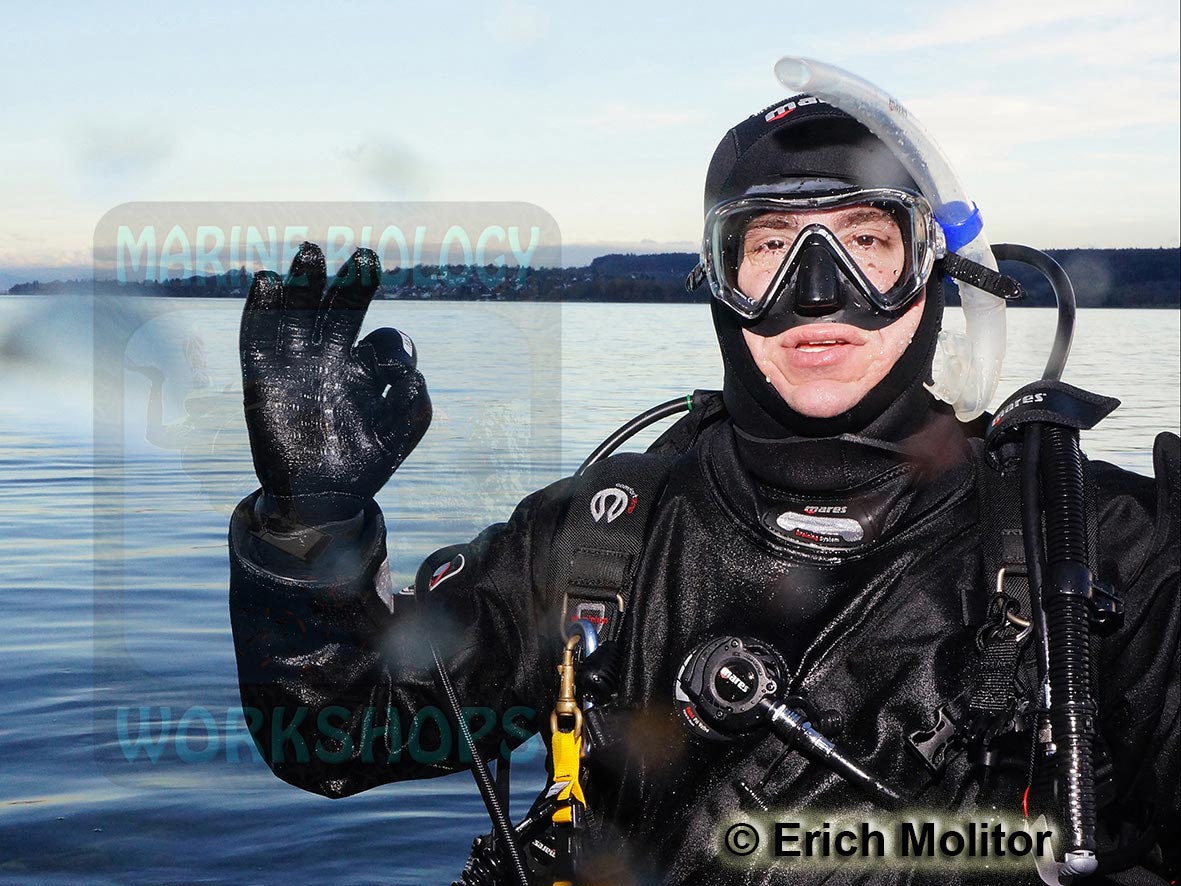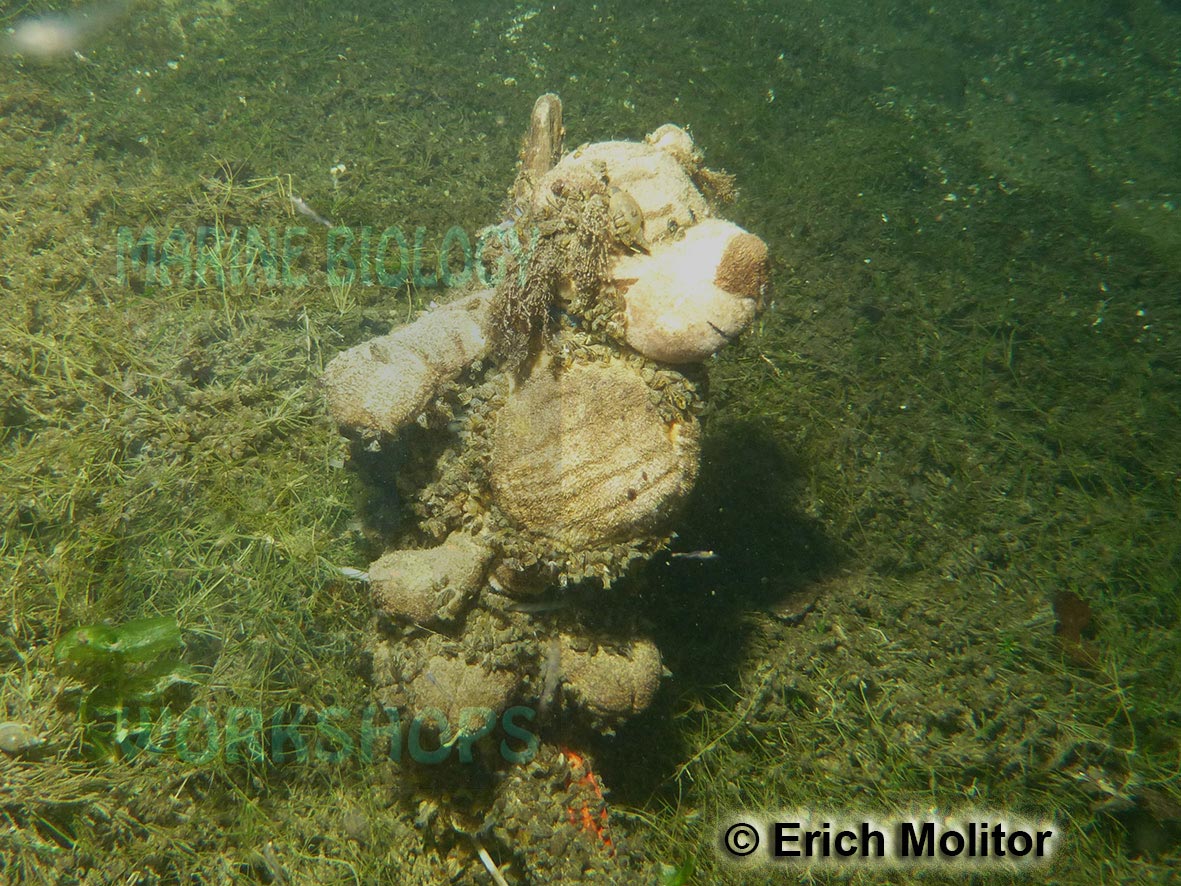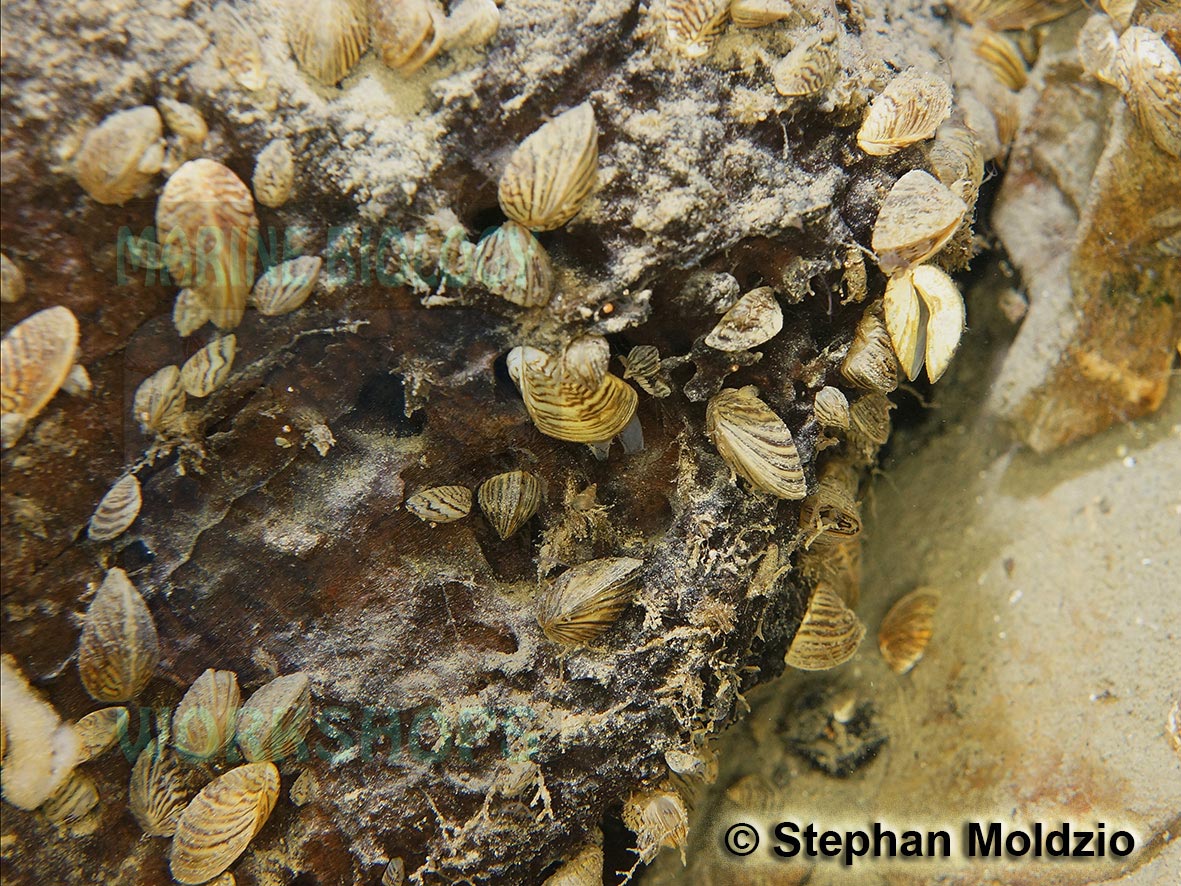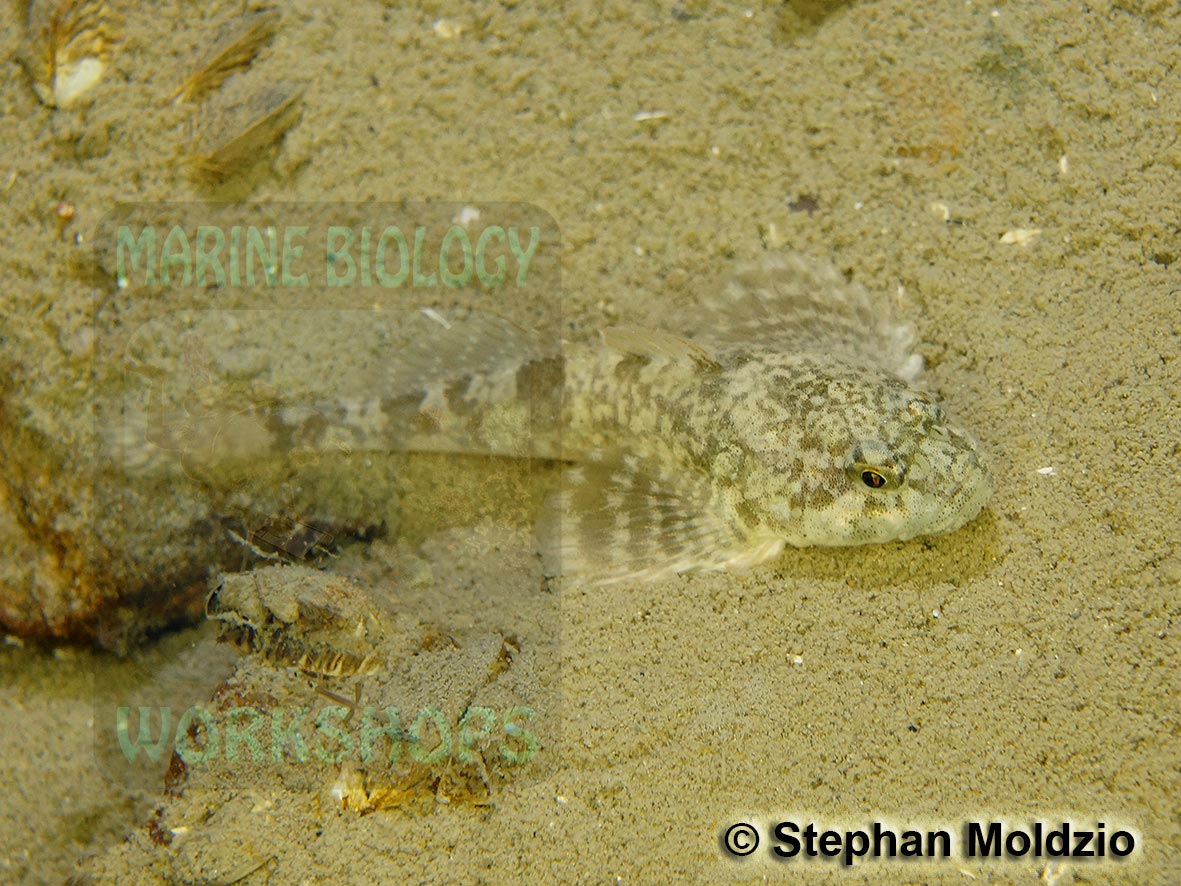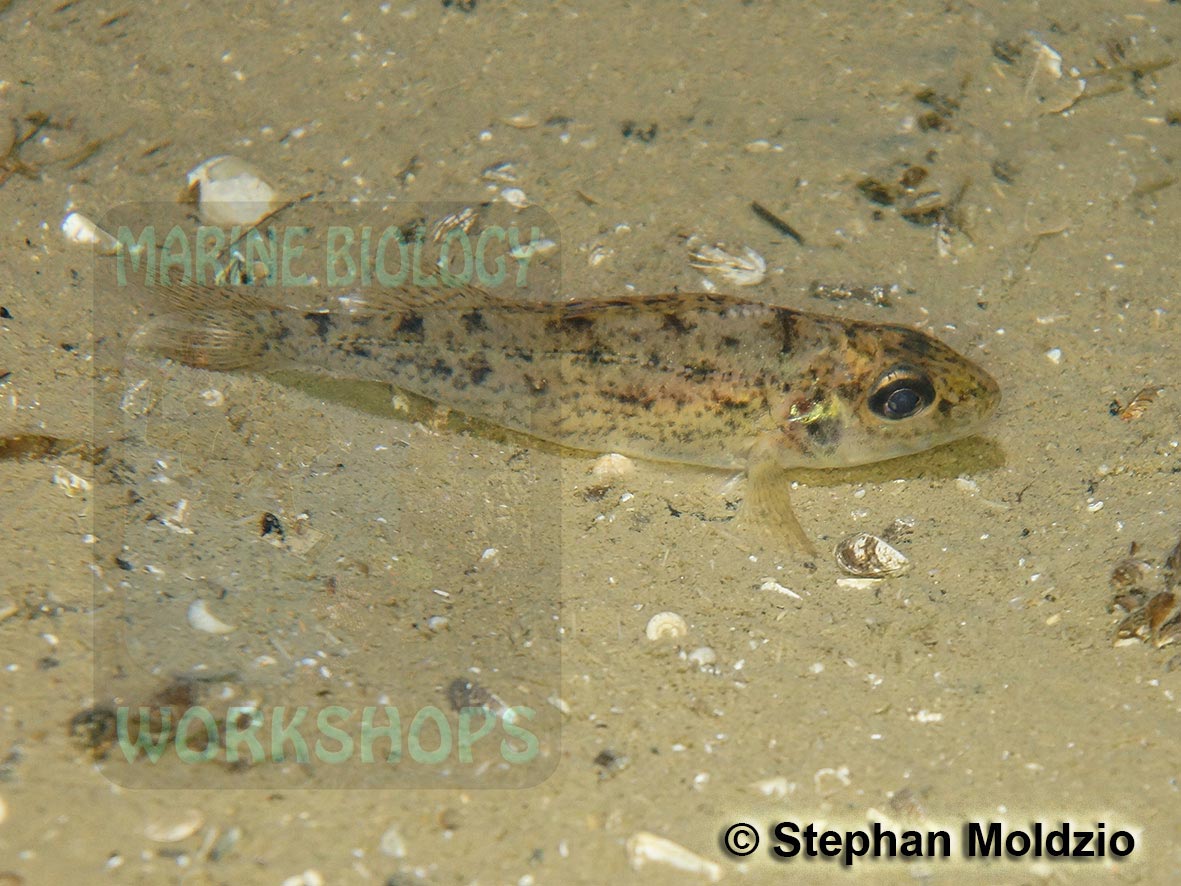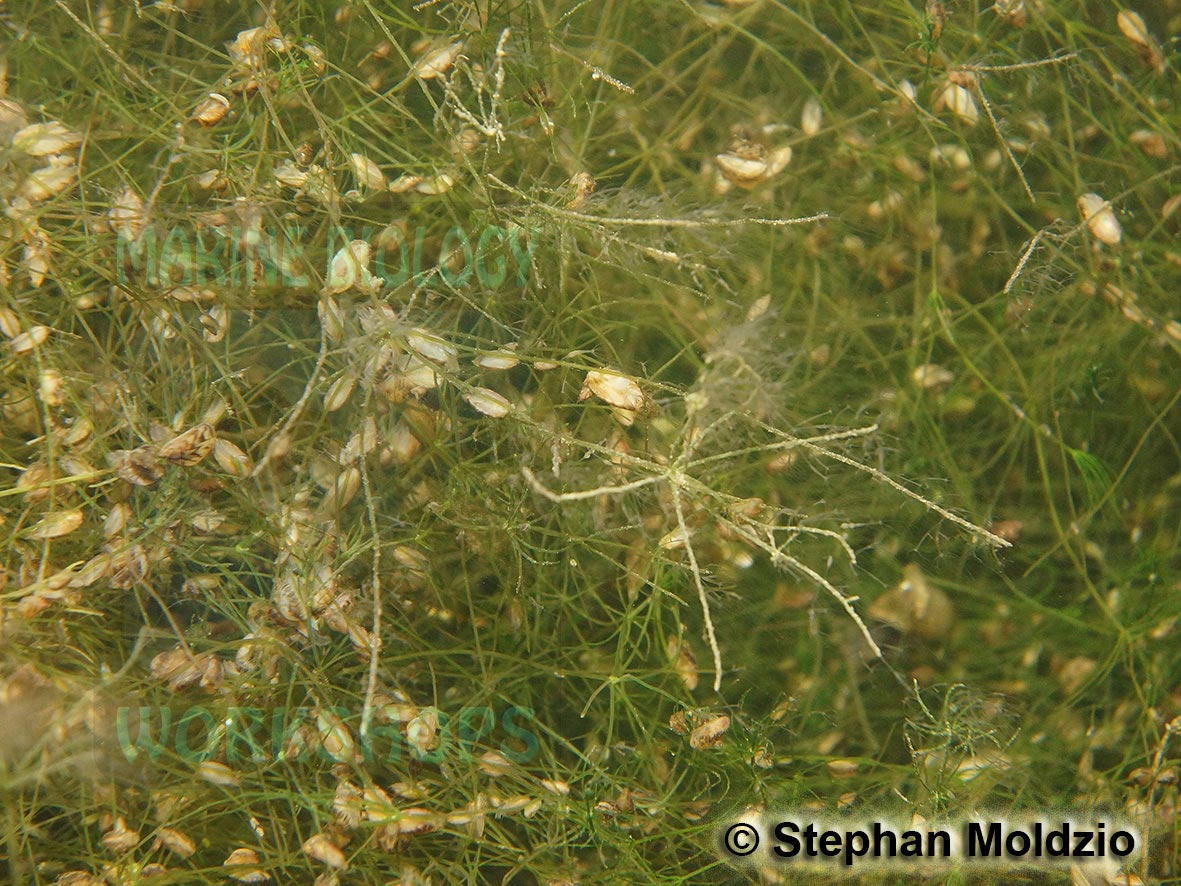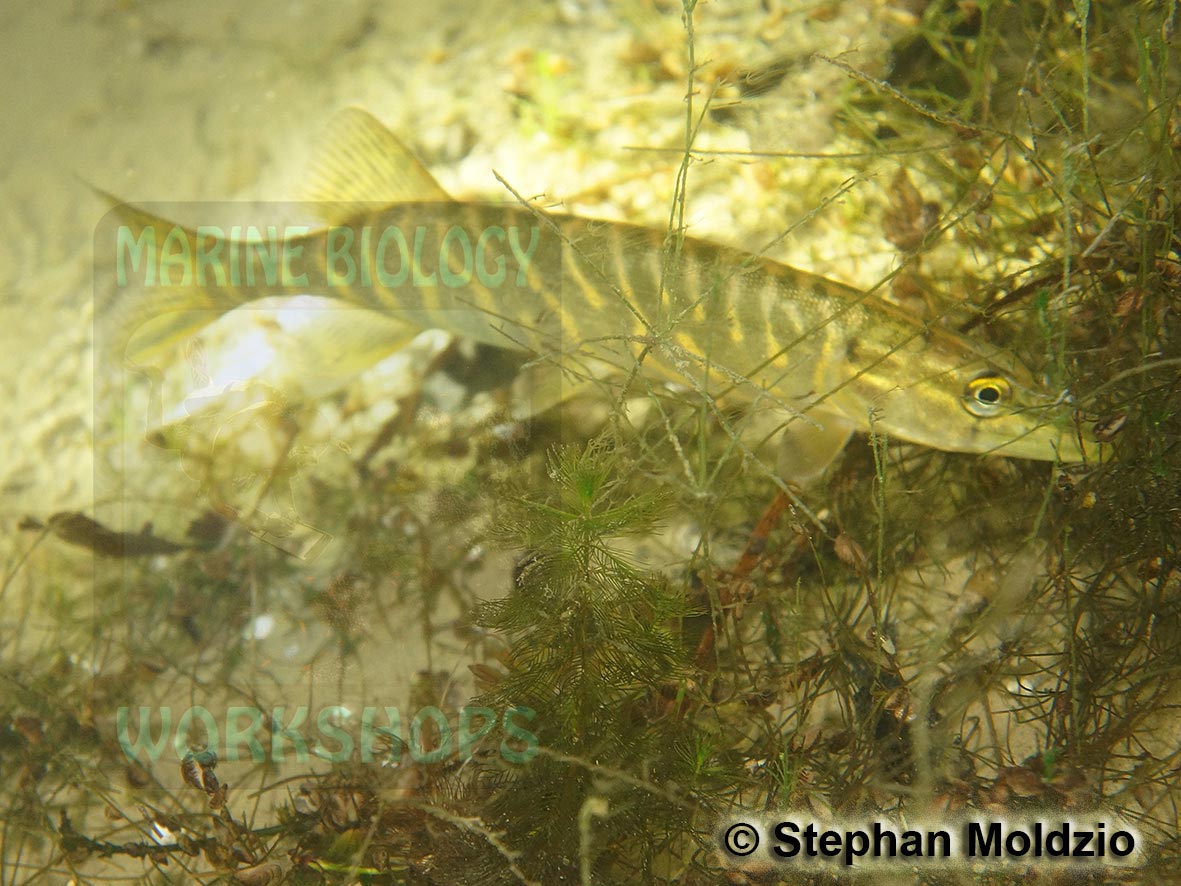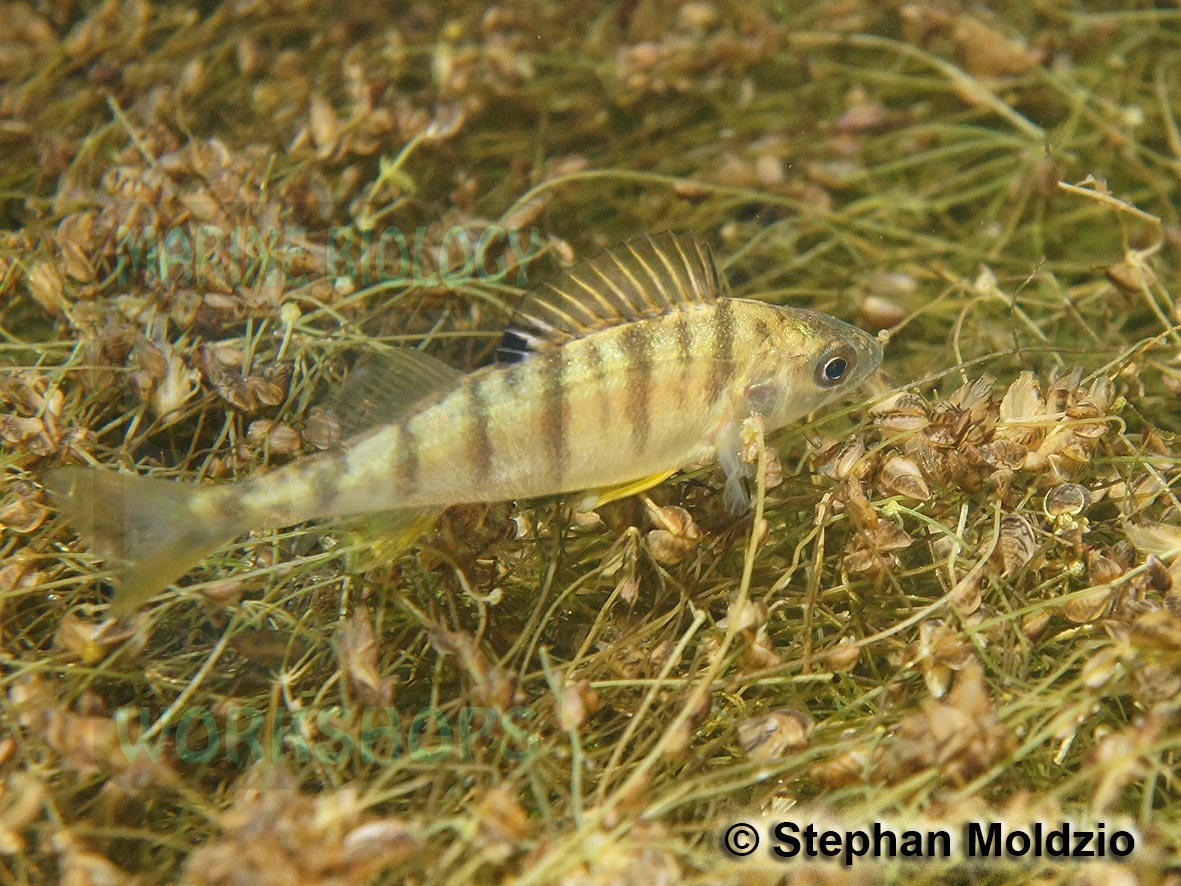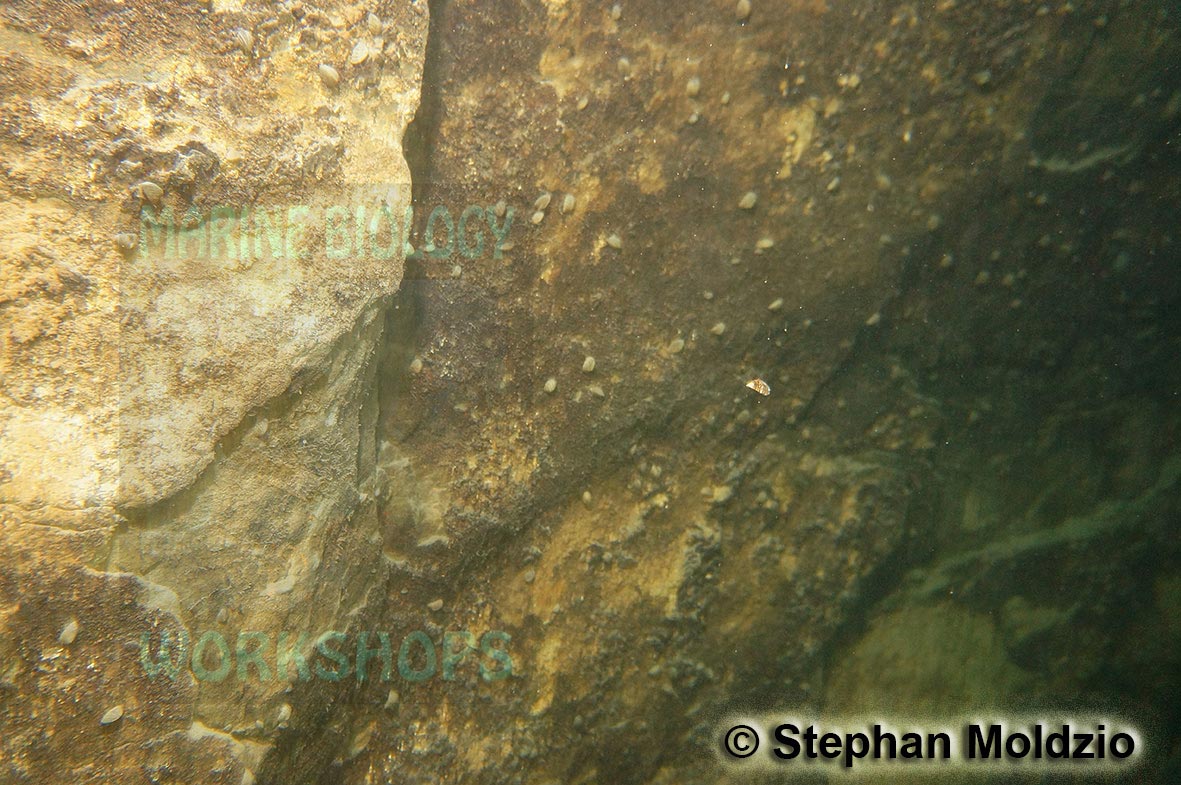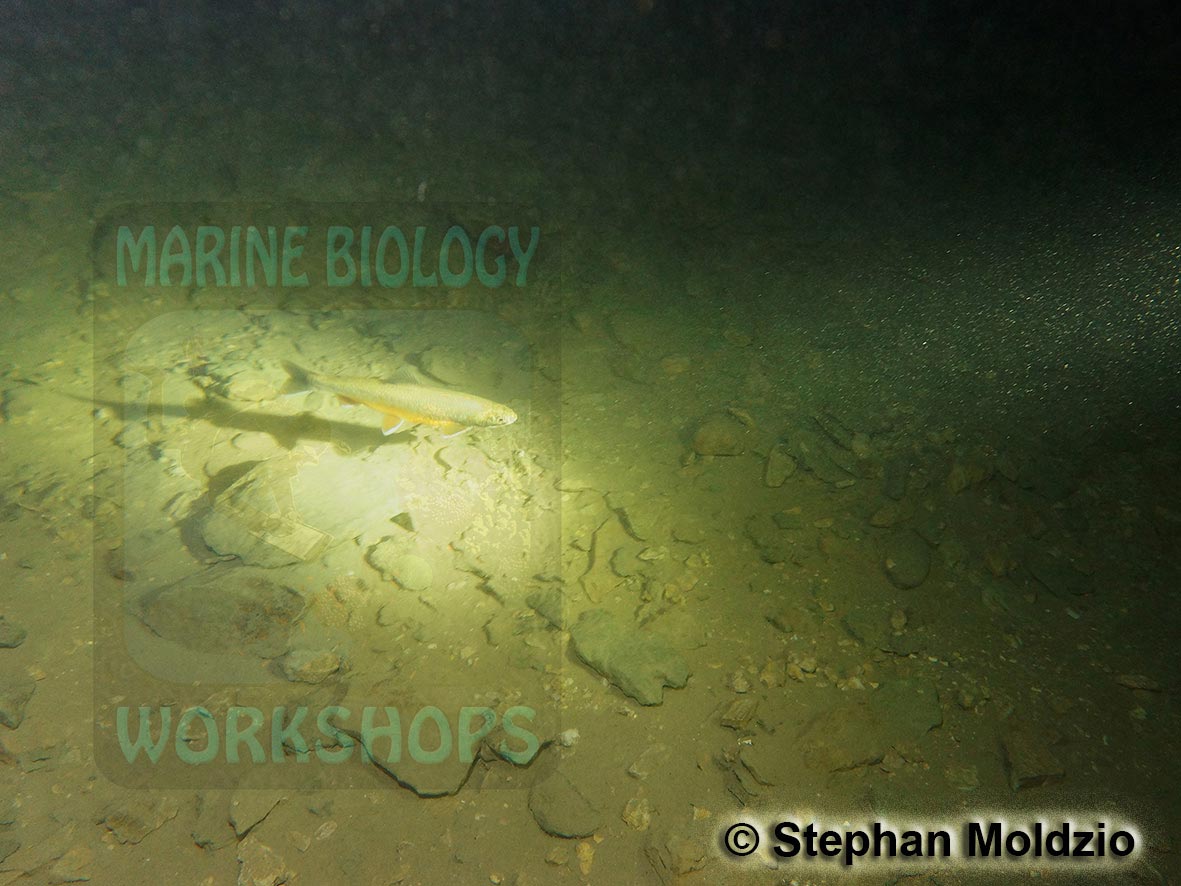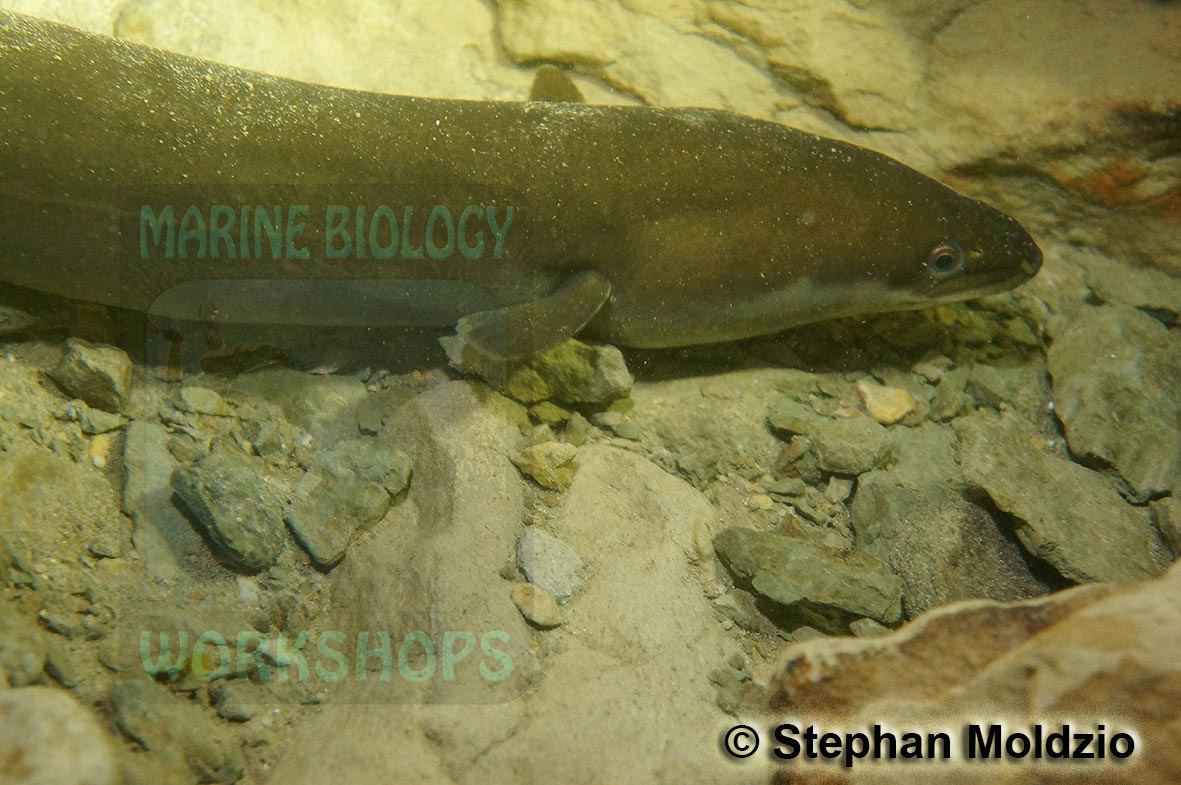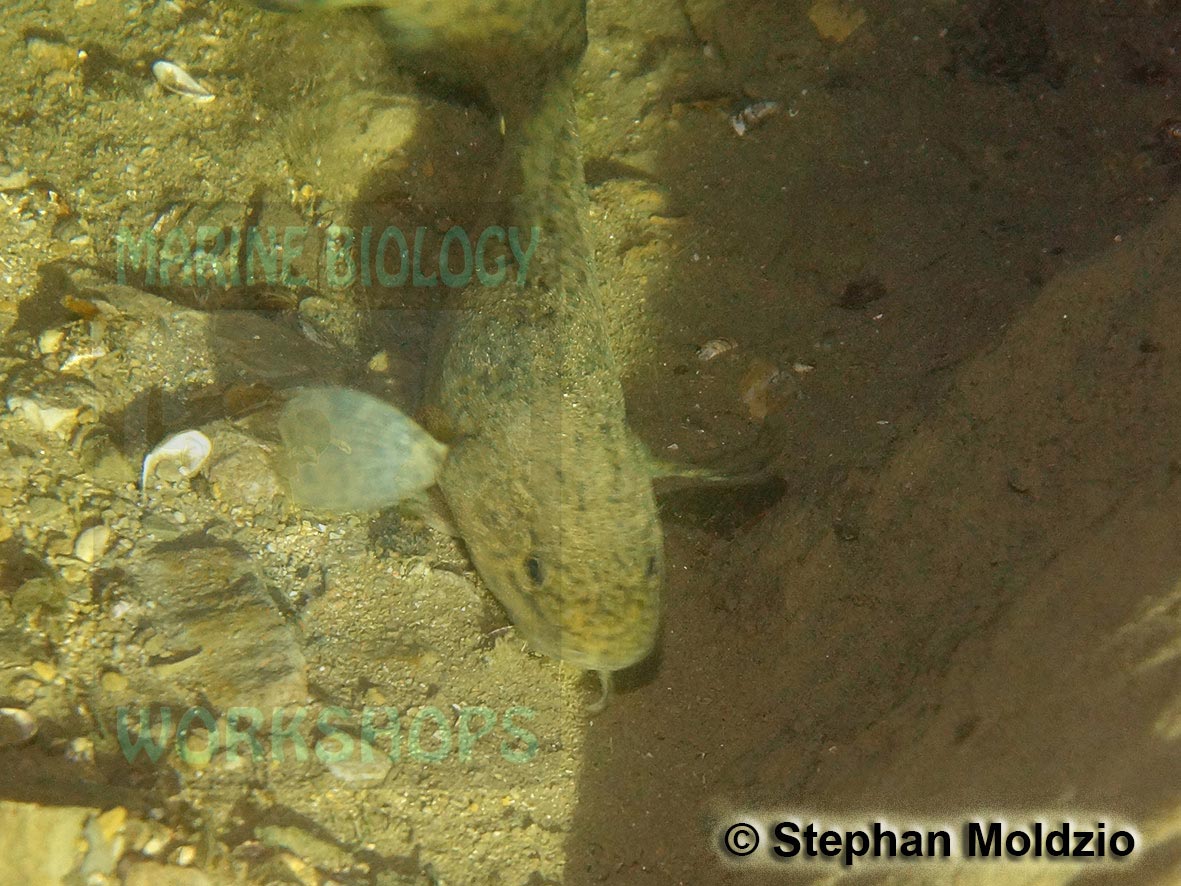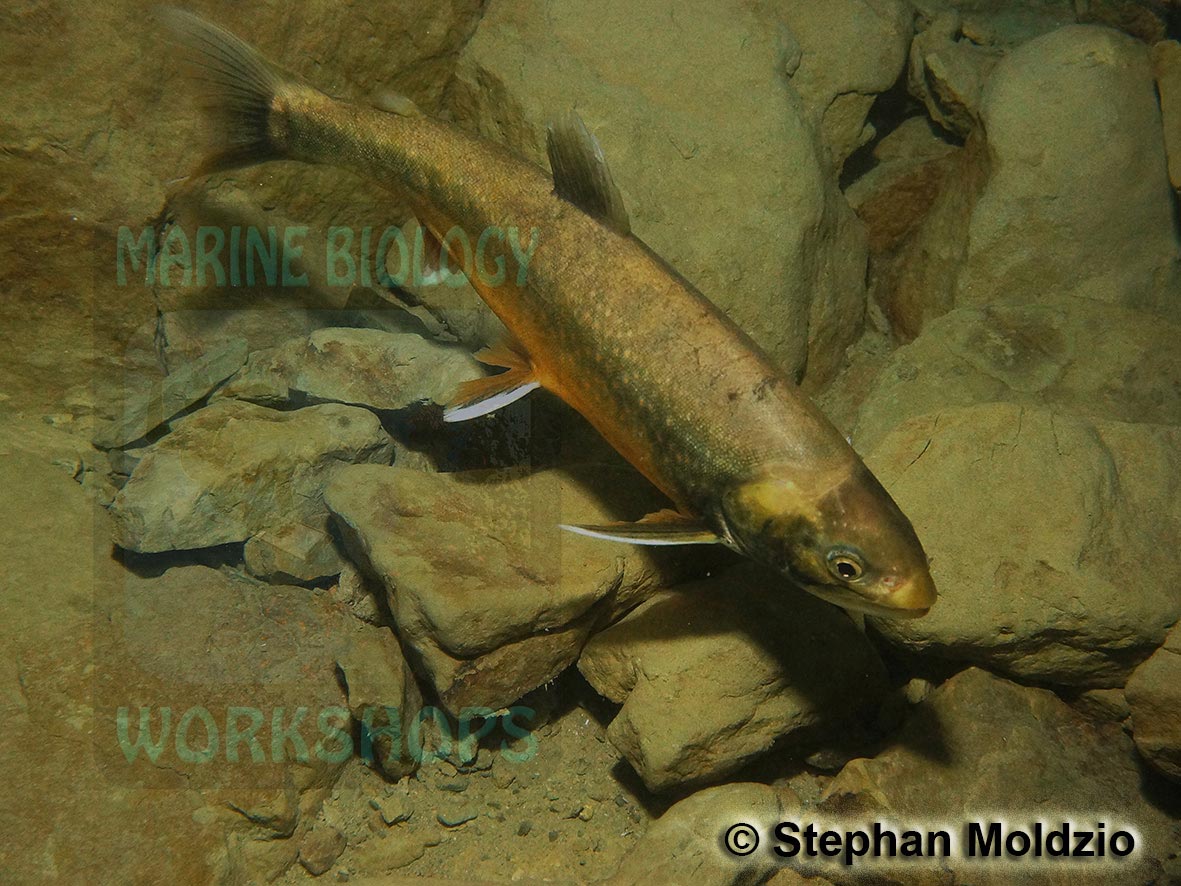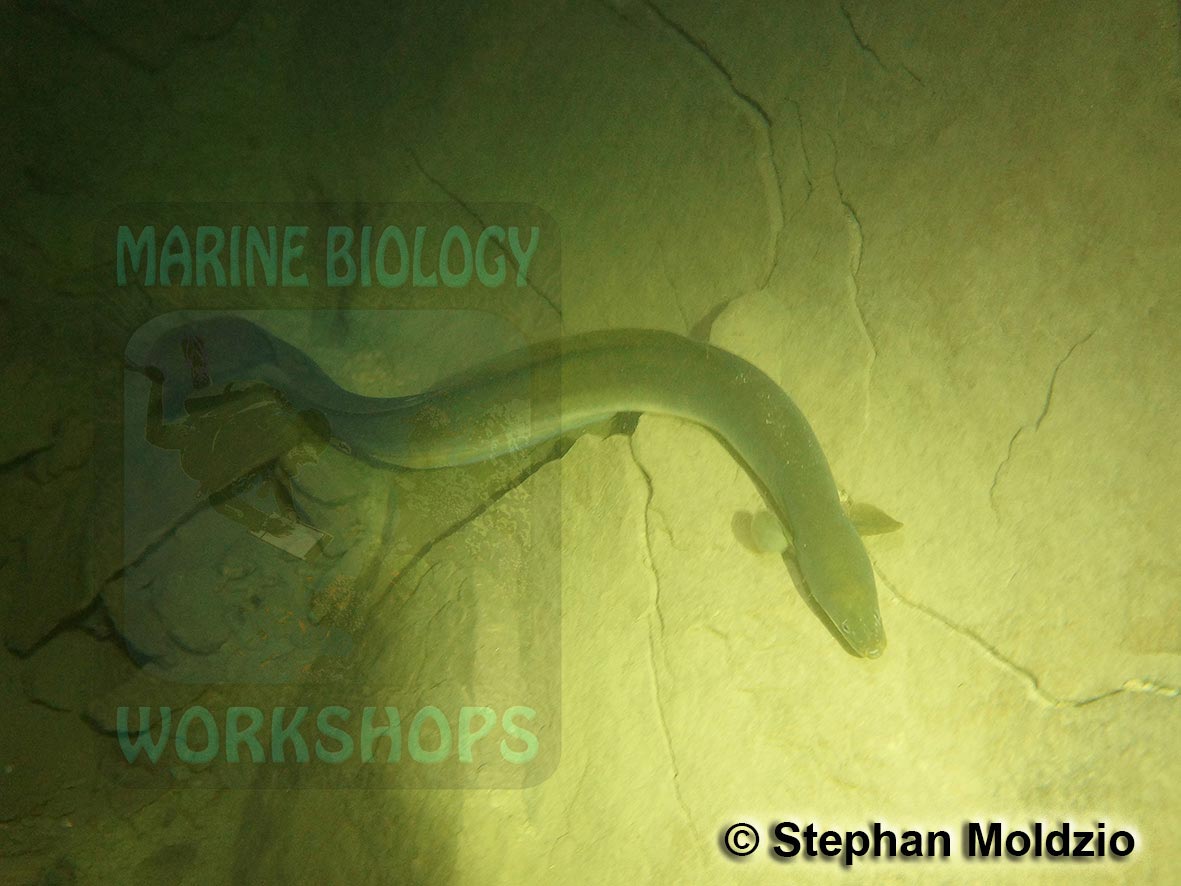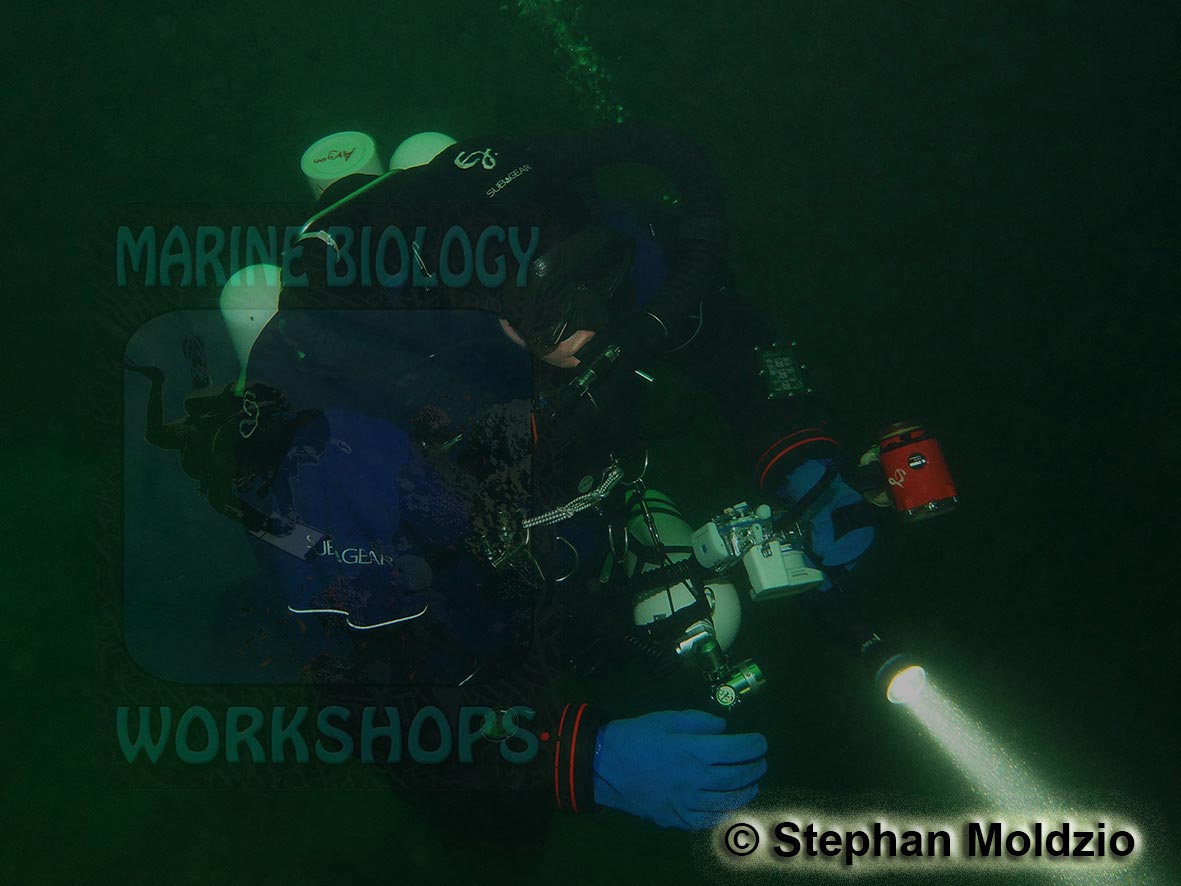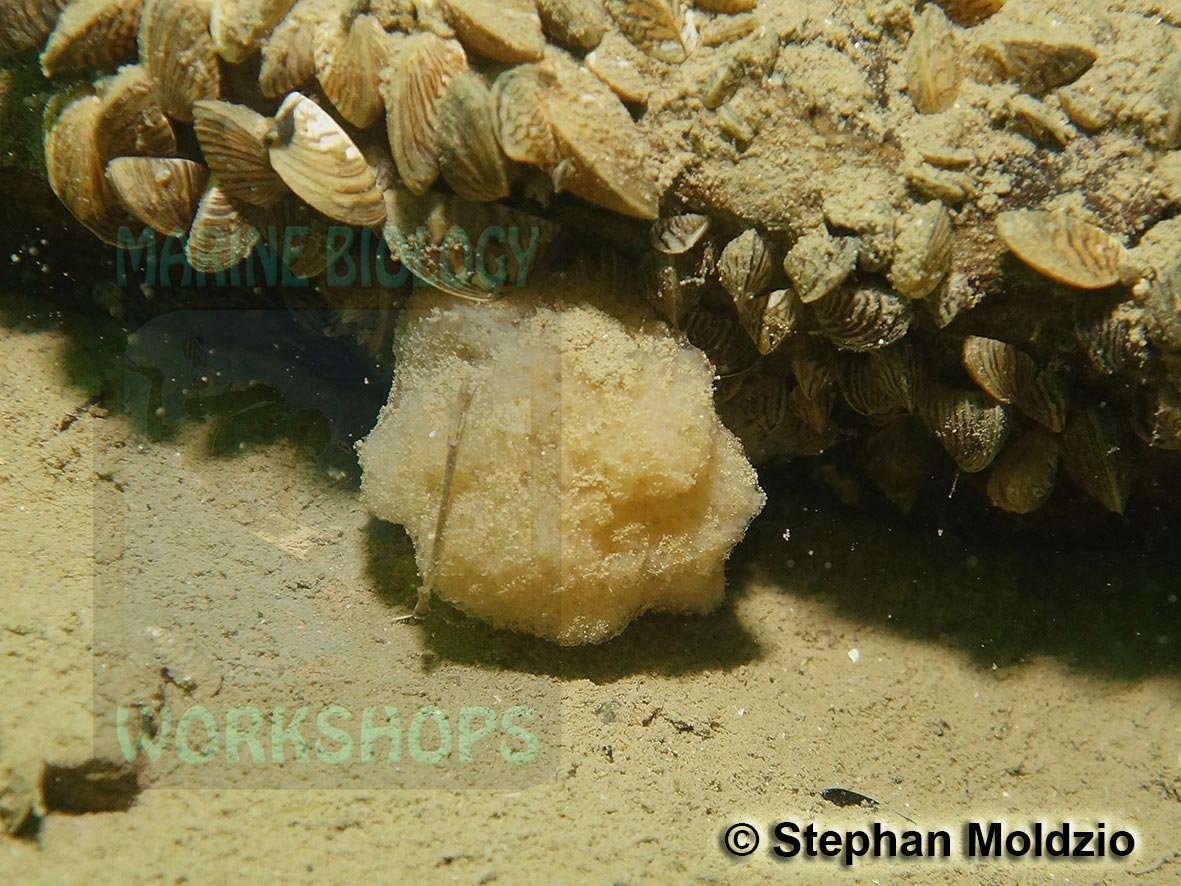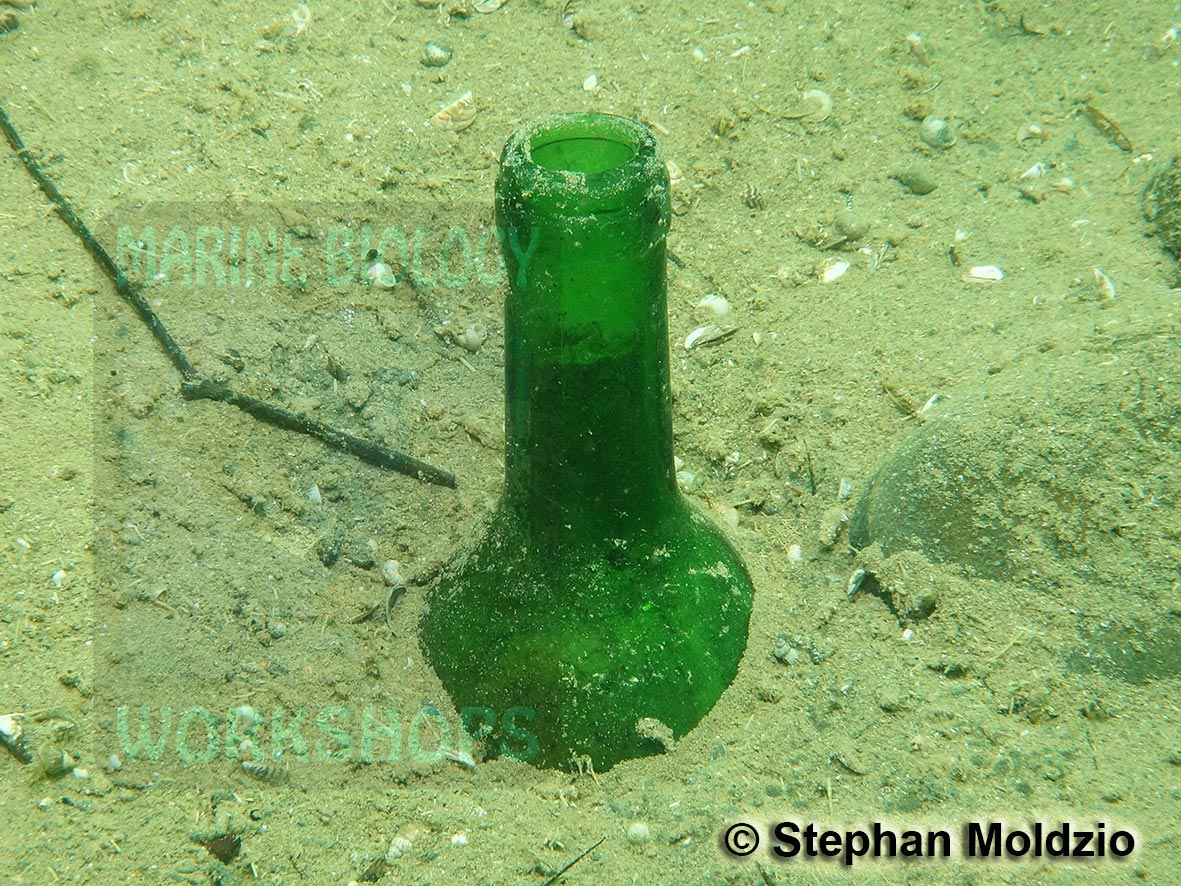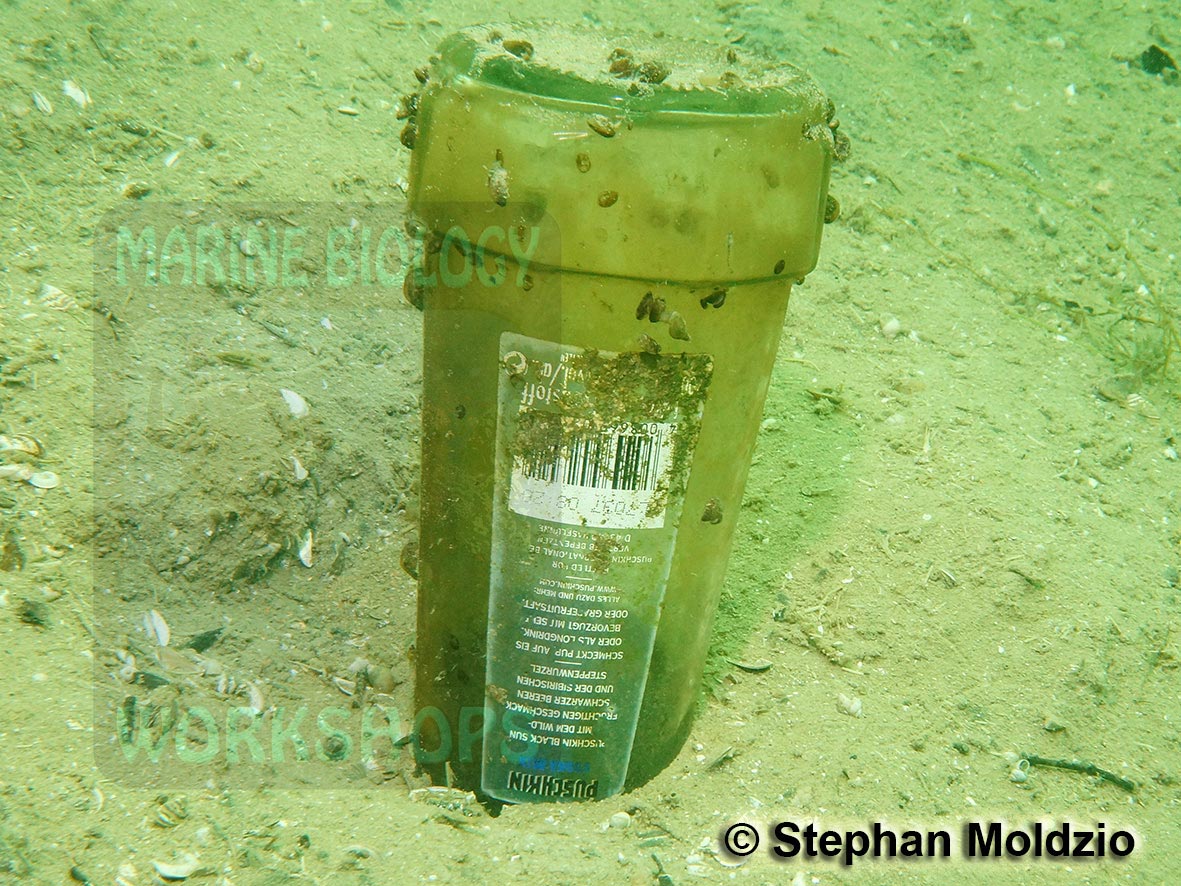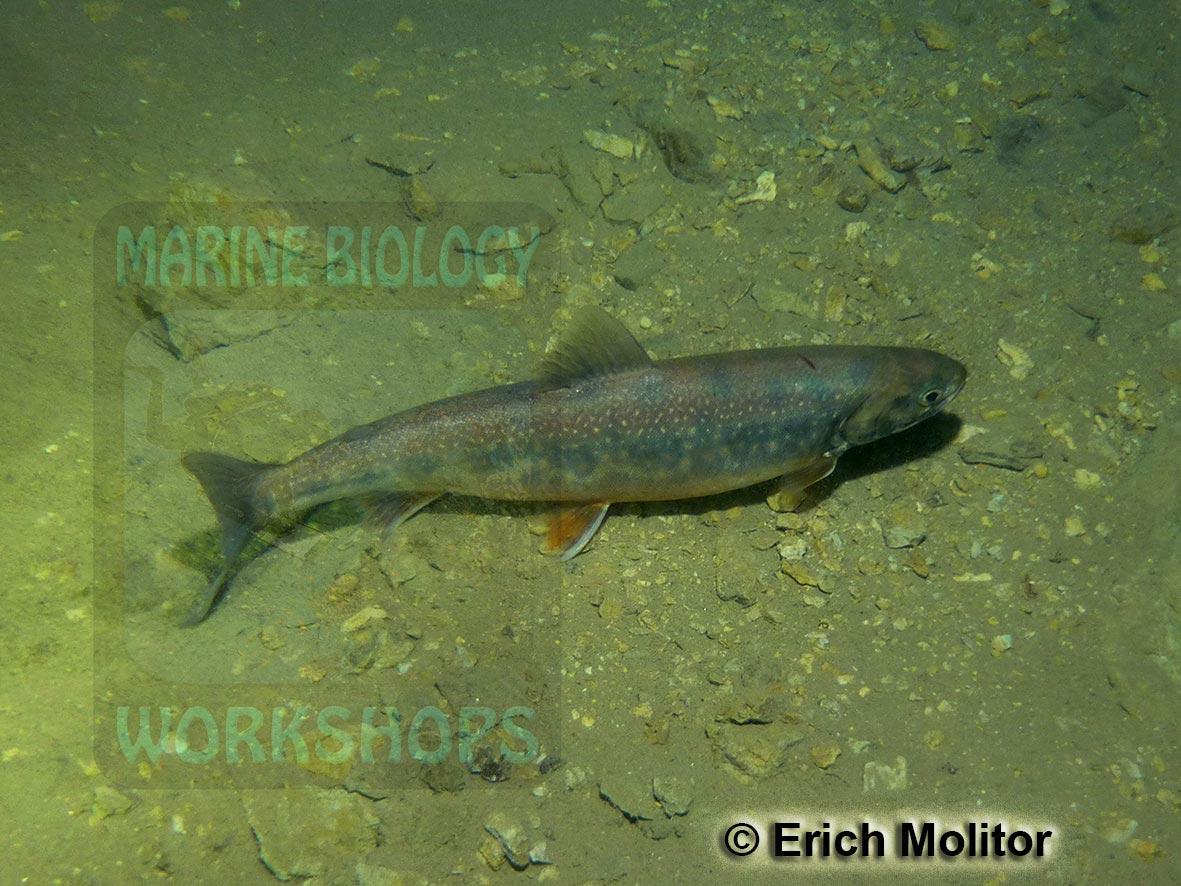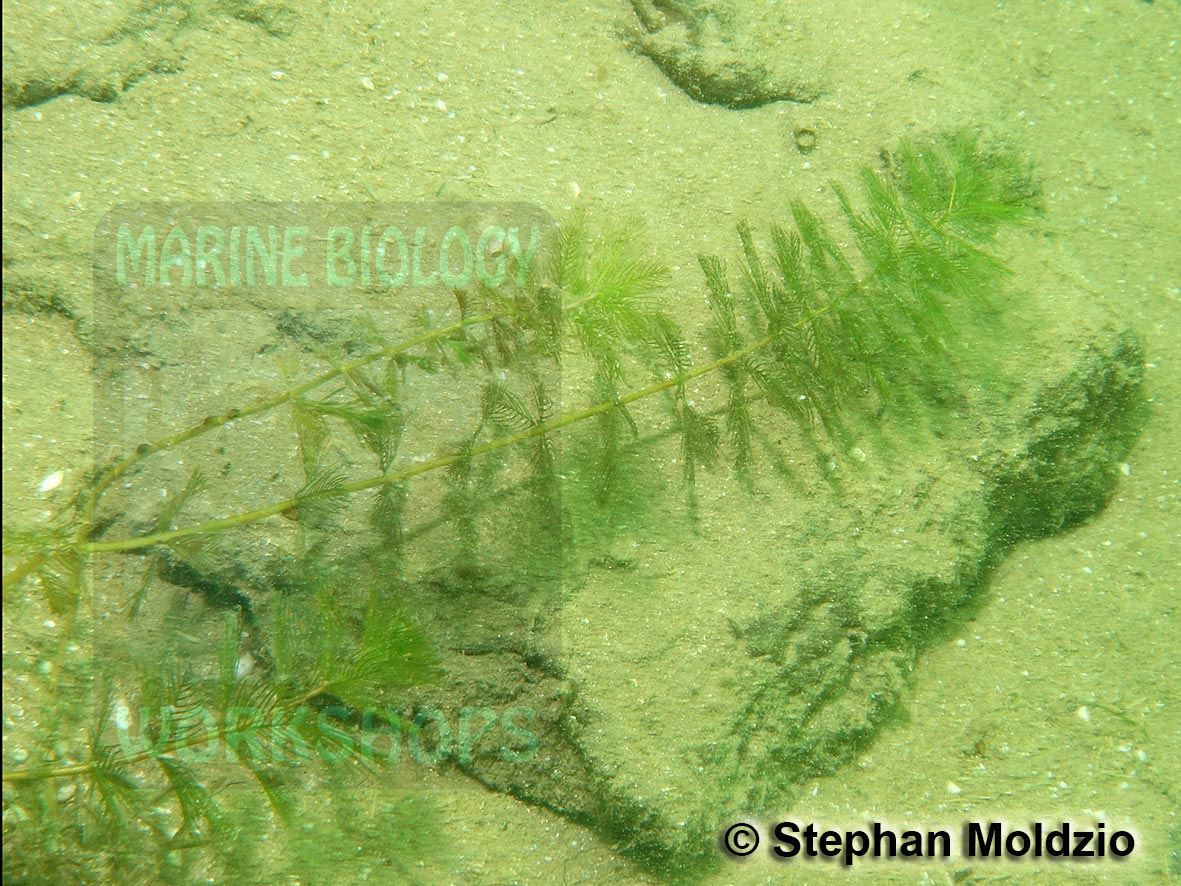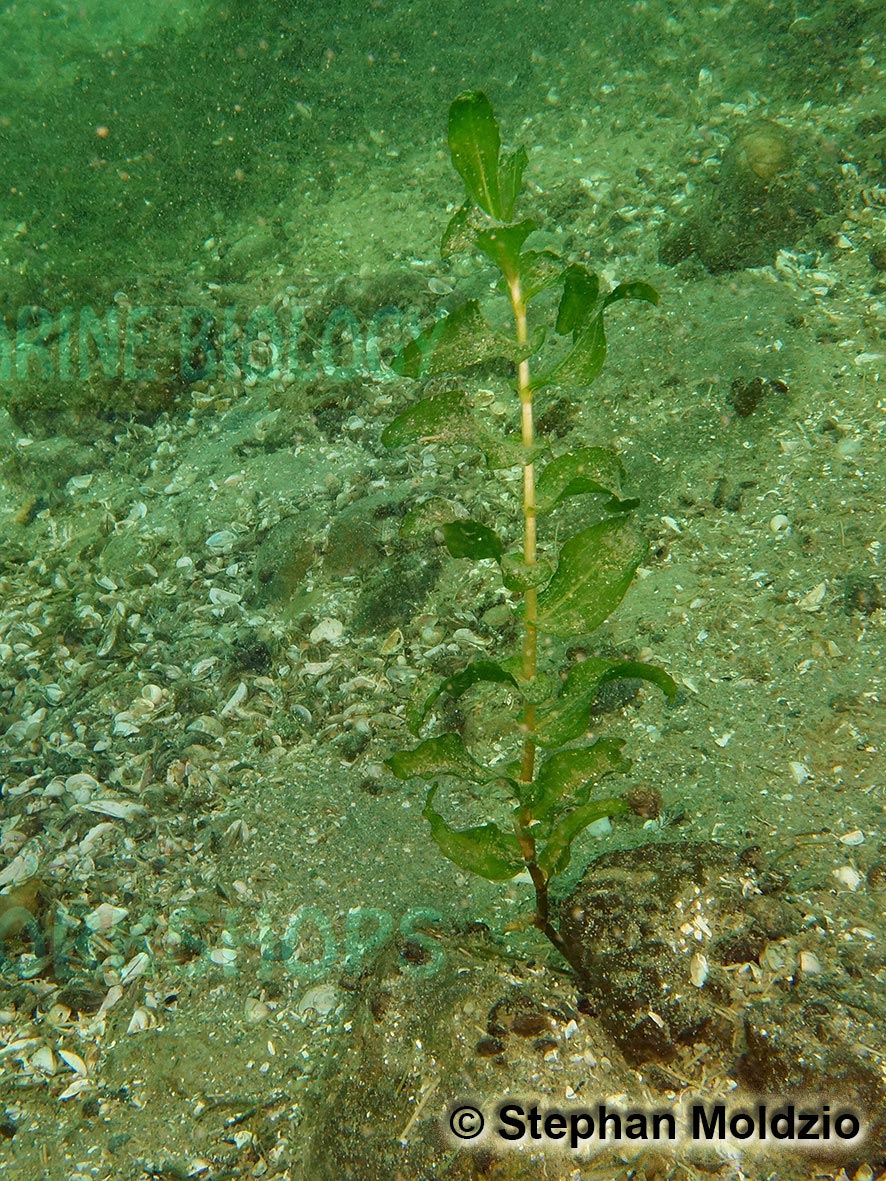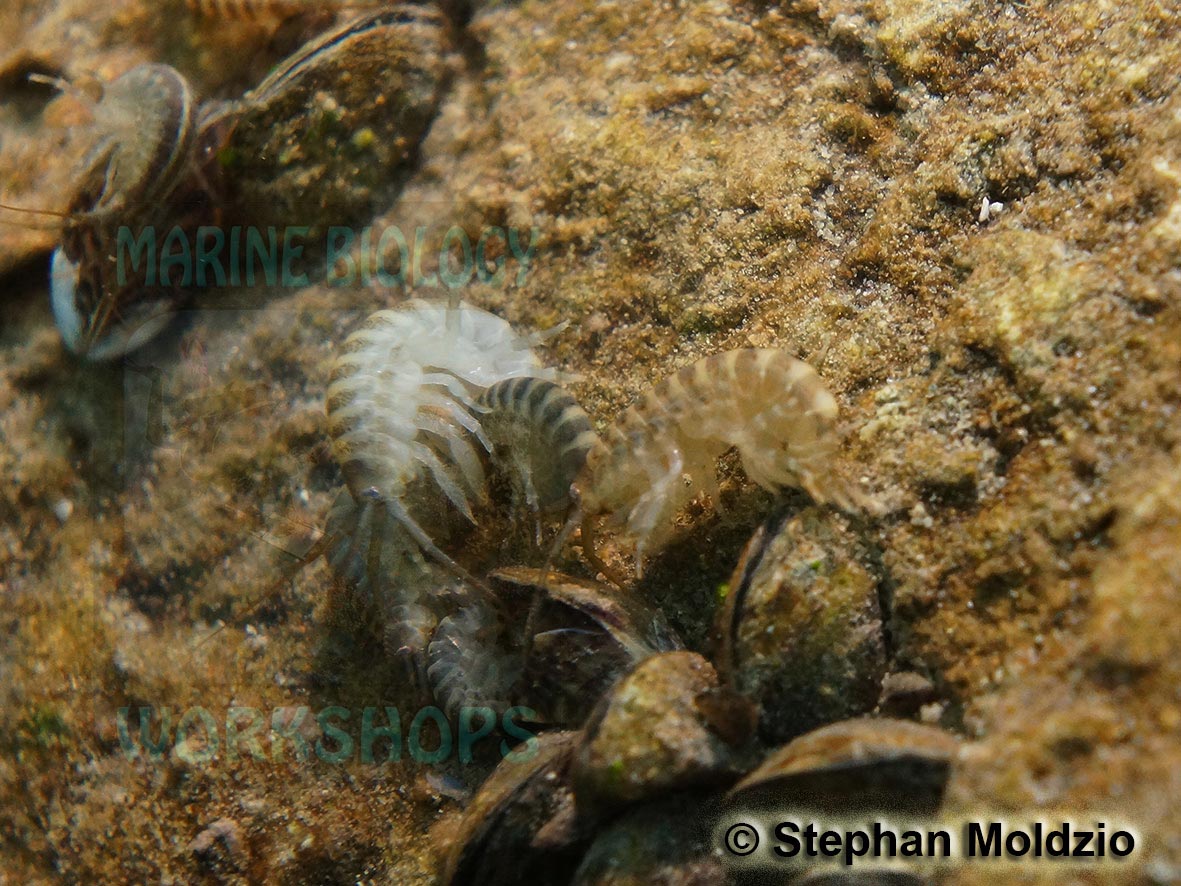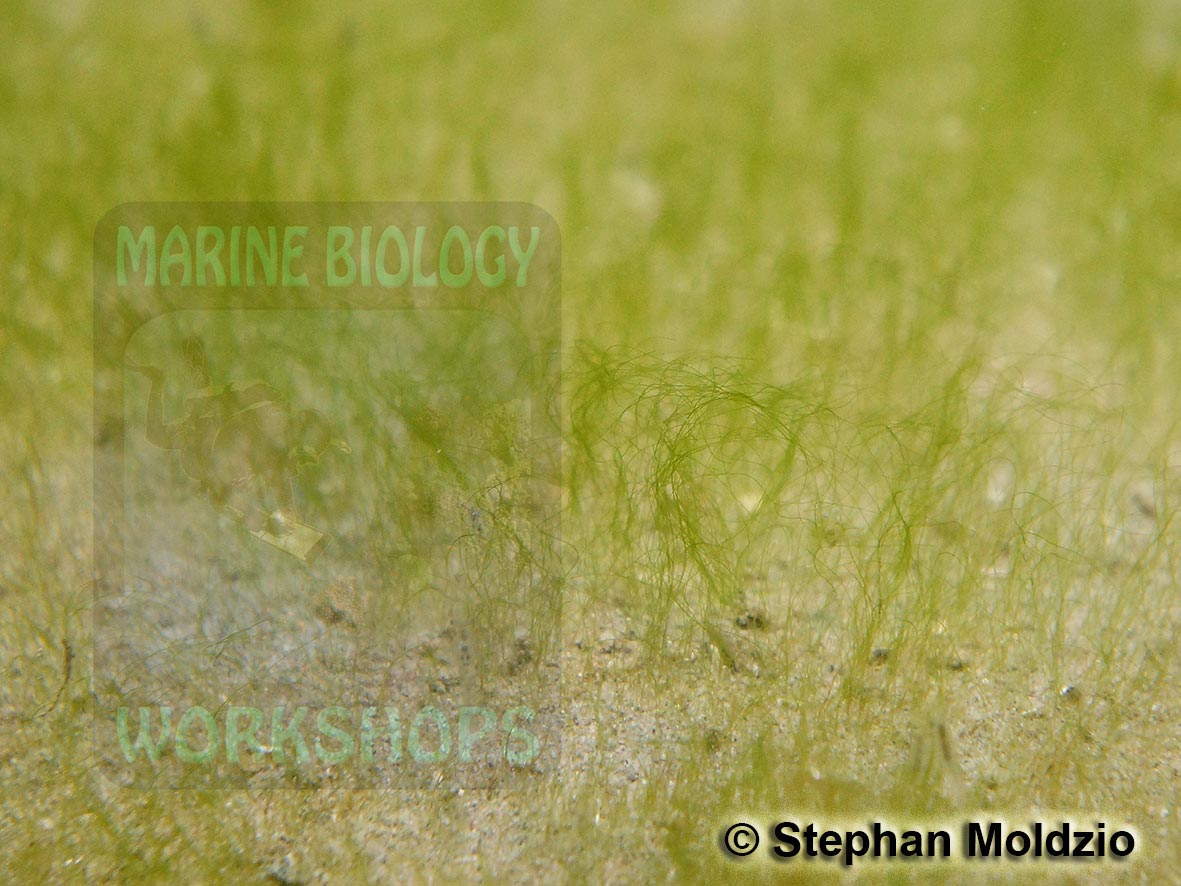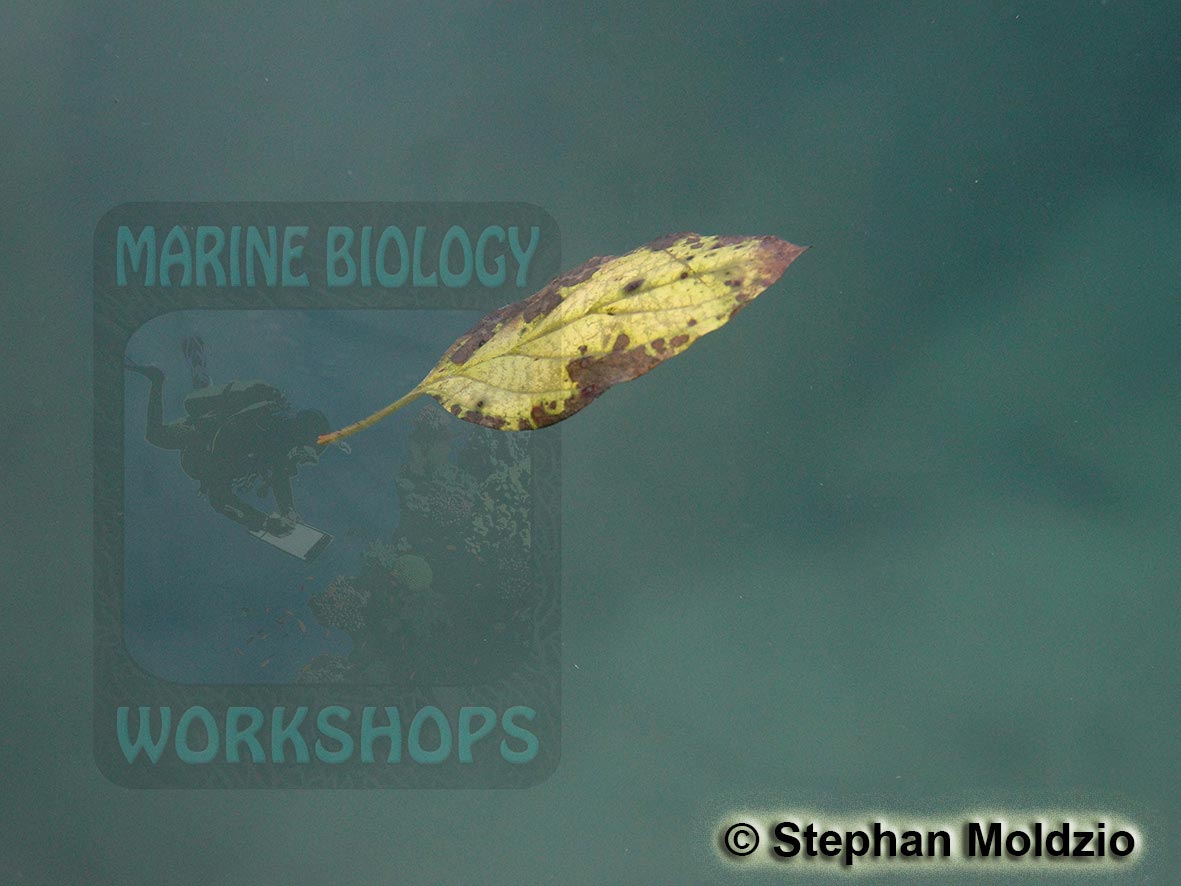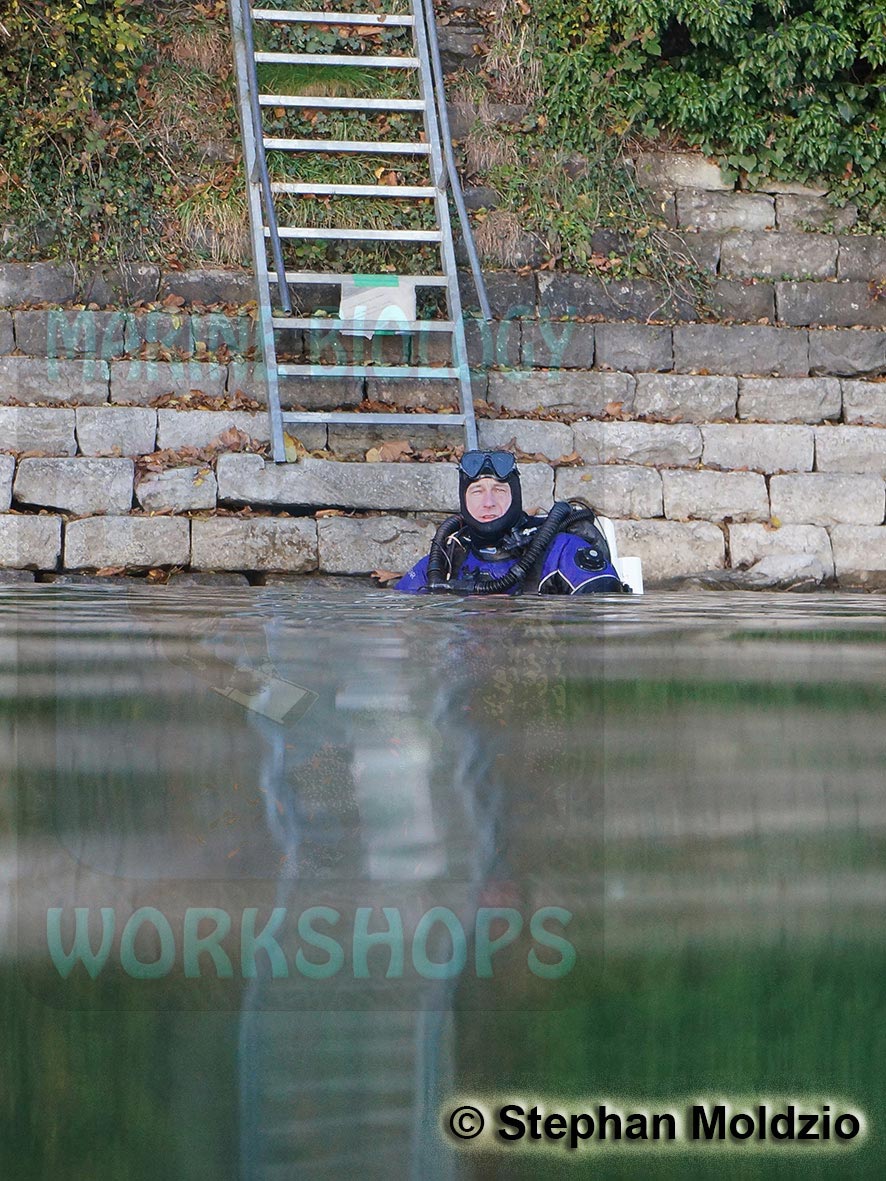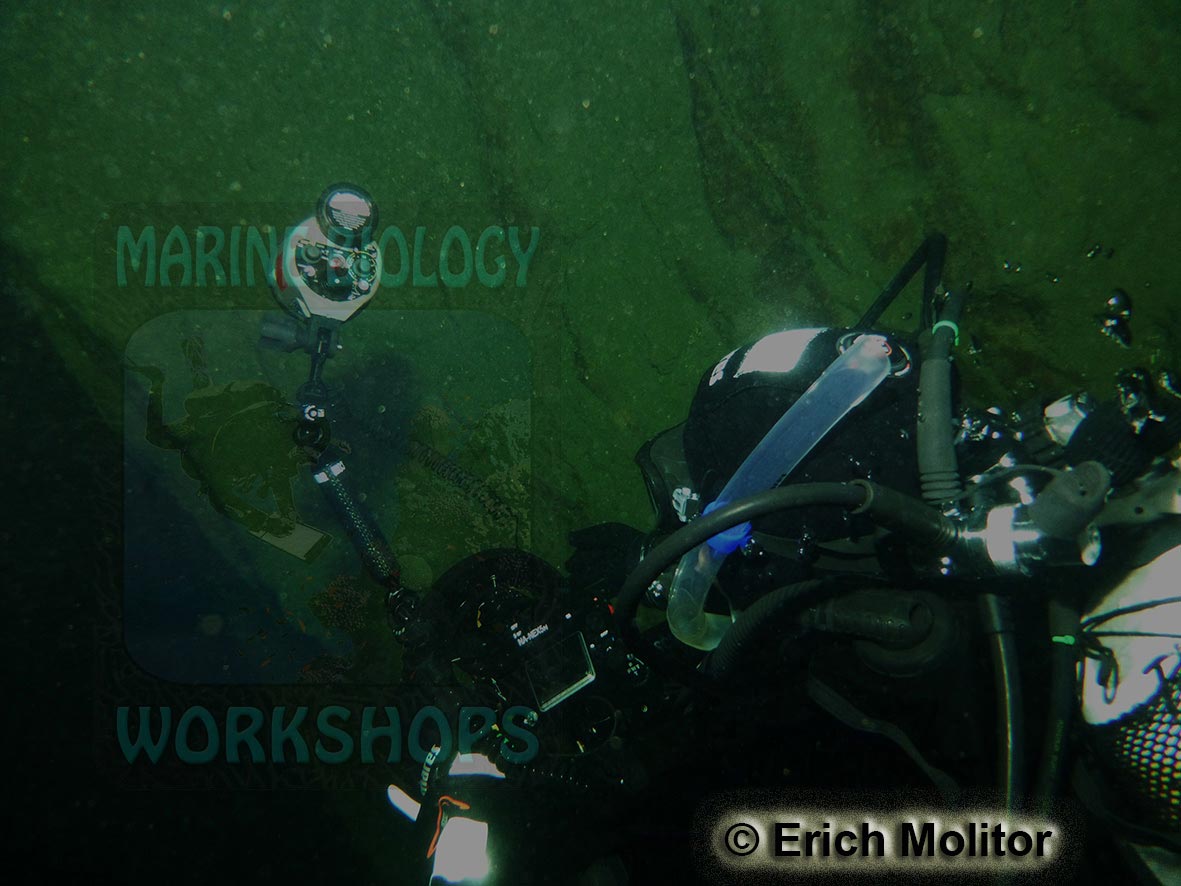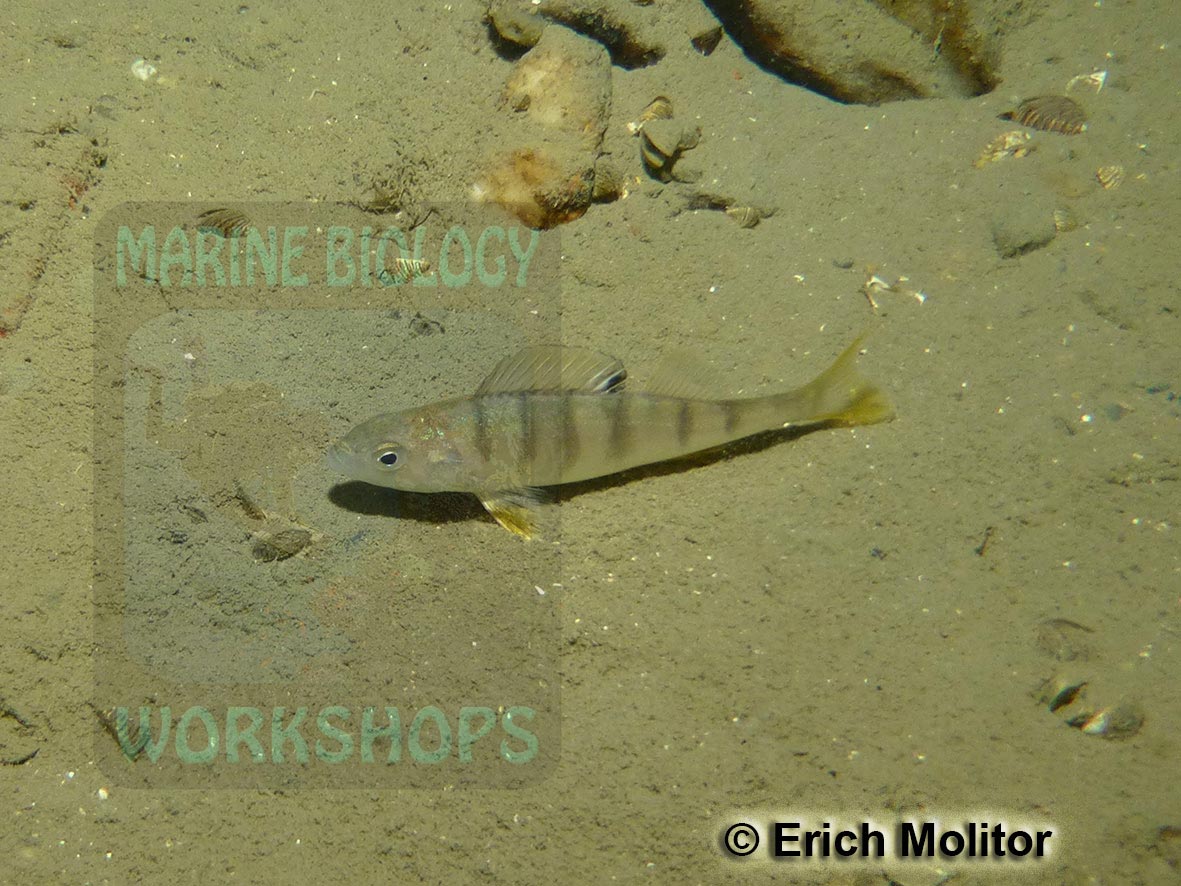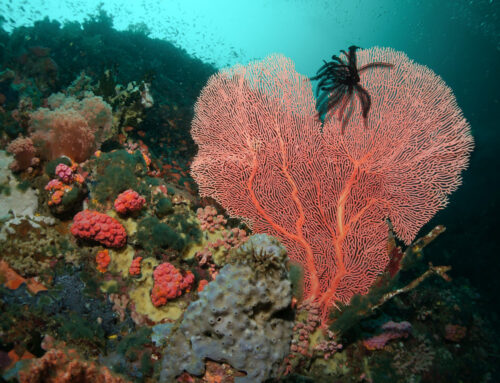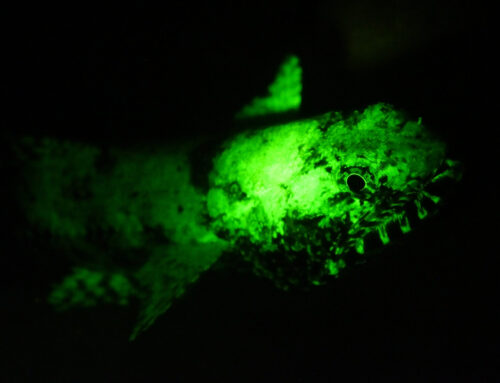The Lake Constance is 395 m above sea level and is, with an area of 536km² and a volume of 48 km³ by far the biggest lake in germany. The maximum depth is 254 m, the average depthg 90m.
It´s basin was formed by the „Rhine glacier“ during the last ice-age.
During the 1960´s to the 1980´s the Lake Constance got increasingly overfertilised by sewage and nutrient influx.
Due to the construction of numerous sewage and other measures, nutrient levels decreased again. Today, the Lake Constance has gained a good water quality again with nutrient levels of approx. 4,4 mg/l nitrate and 0,018 mg/l phosphate.
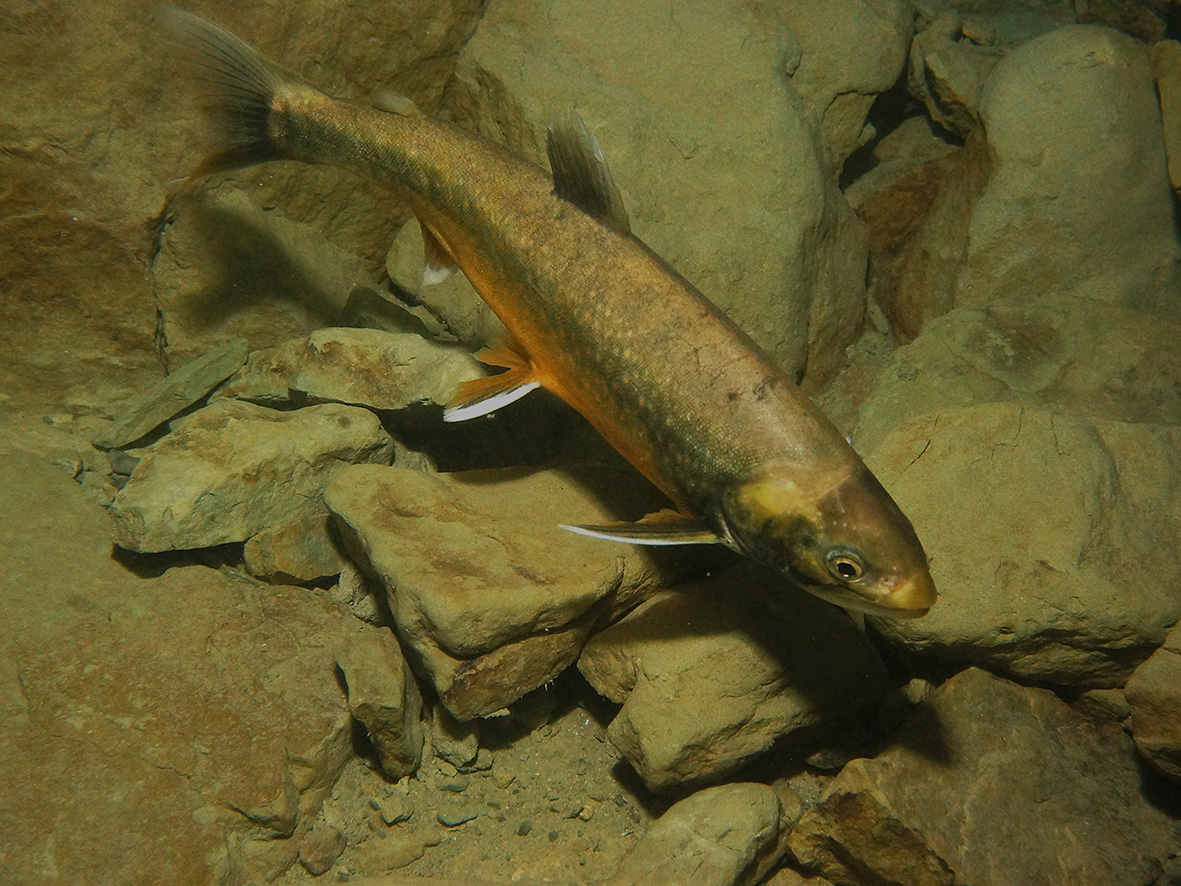
We entered the water at the dive site „Überlingen, Parkhaus/Post.
Visibility around 10m, water temperature depending on depth from 6 to 11 °C.
The muddy-sandy ground is covered partially with water plant thickets comprising of pondweeds (Potamogetonaceae), watermilfoil (Myriophyllum sp.) and filamentous green algae.
Many fishes seek shelter in these thickets and especially after sunset we met with the European perch (Perca fluviatilis), Northern pike (Esox lucius), Eurasian ruffe (Gymnocephalus cernua) and countless Bullheads (Cottus gobio). Besides this there were dumped bottles of various spirits and beer, as well as a teddy bear strapped under water, which was already overgrown by the omnipresent Zebra mussels (Dreissena polymorpha).
But our primary target was the Arctic char (Salvelinus alpinus), whose spawning season starts in november in cold, oxygen-rich waters over the deep rubble grounds.
Starting from an edge at around 15 m, a vertical, partially overhanging (!) wall of sandstone drops off down to 42 m.
Really impressing! From there the rubble ground slopes down even further.
Over this rubble fields we spotted roving Arctic char, the males with bright red belly. Wow!
Among them the European Eel (Anguilla anguilla) and Burbots (Lota lota).
The Arctic char is an absolute cold water fish, which occurs northwards to greenland and northern canada. It needs clear and oxygen-rich water.
The fish stock of Arctic char in the Lake Constance has recovered quite well thanks to an improving water quality and other measures.
On the other hand, sadly, it´s relative, the Deepwater char (Salvelinus profundus) did not survive that period of overfertilization during the 70´s and 80´s. Its spawning grounds in around 60 to 80 m depth became too oxygen-depleted, preventing the development of their eggs and larvae. – this formerly endemic species of the Lake Constance became extinct.
At this weekend we made 3 dives down to the Arctic char at Parkhaus / „Poscht“. The fourth dive we made at „Campingplatz, Überlingen“, where the wall drops off just down to 30 – 35 m.
But there we encountered neither Arctic char, nor other fishes – except of one tiny perch…
But there were myriads of Zebra mussels, not only on the wall, but covering virtually every available piece of substrate. Even the water plants were colonized by these mussels. A closer view also revealed small freshwater polyps (Hydra sp.).
The Zebra mussel originally occurs in the rivers of the Black sea area.
It is an invasive species that was introduced by ships.
Swarms of small mysid crustaceans (Mysidacea) hovered in the blue water. Beneath the mussels there grew some whitish freshwater sponges (Ephydatia sp.) on the wall.
Then, my attention was attracted by a quite big, somehow “dauntless” amphipod: The invasive and predatory „Killer shrimp“ (Dikerogammarus villosus). This adaptable and fast-growing amphipod colonized the german rivers, starting from the Danube river in the 90´s and was confirmed for the Lake Constance in 2002.
It has already displaced native amphipods as well as other invertebrates, thus leading to a reduced biodiversity.
Thanks to my buddy Erich „JJ“ Molitor for amazing dives at Überlingen – really excellent diving here, interesting fauna and flora and of course – the Arctic char as a special highlight!
